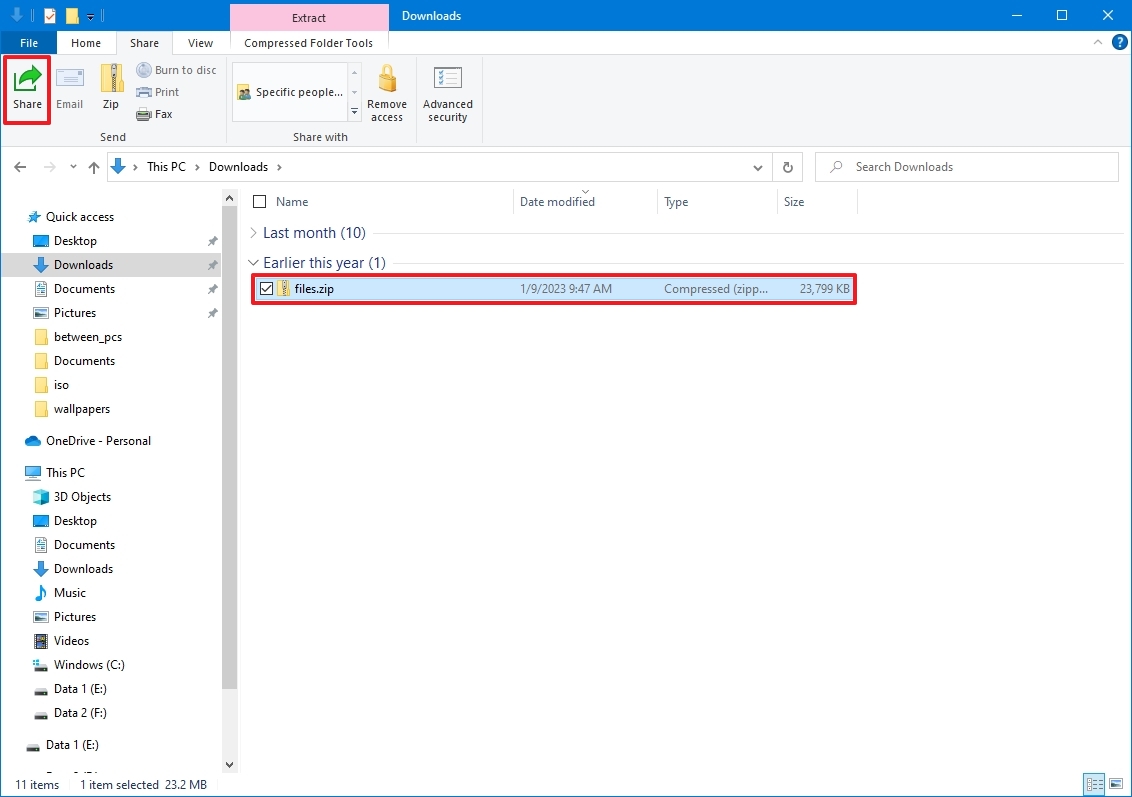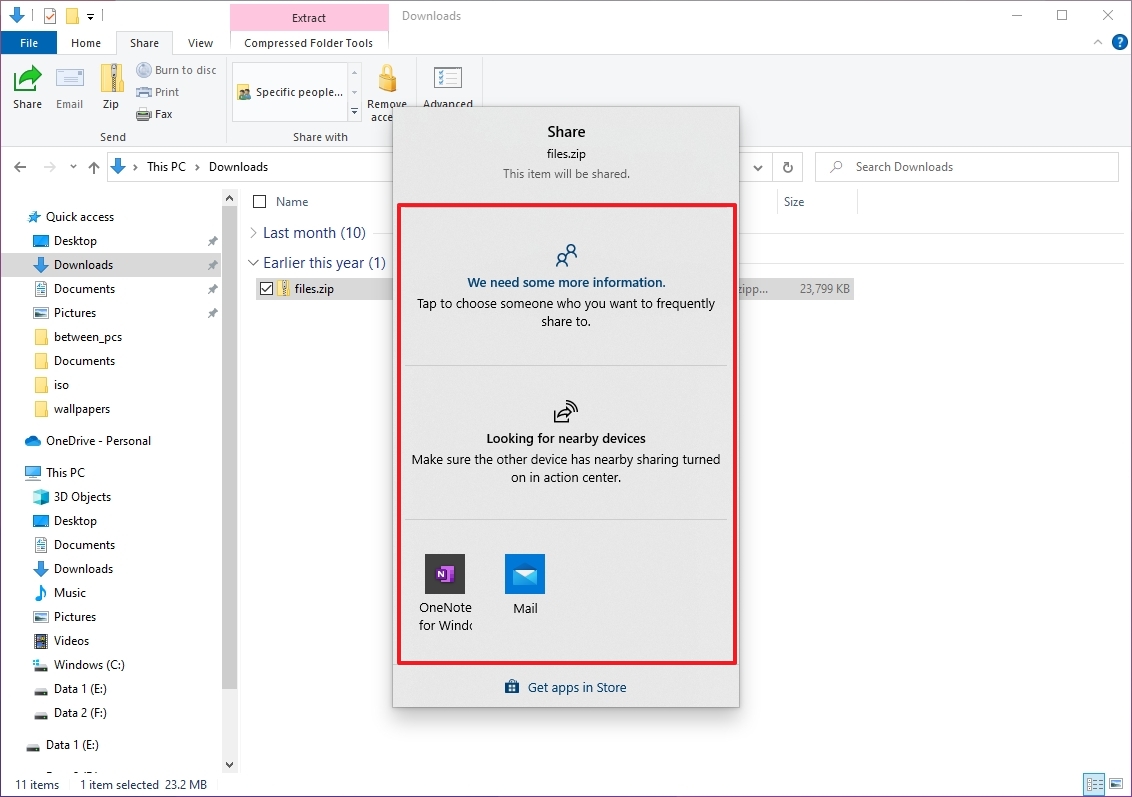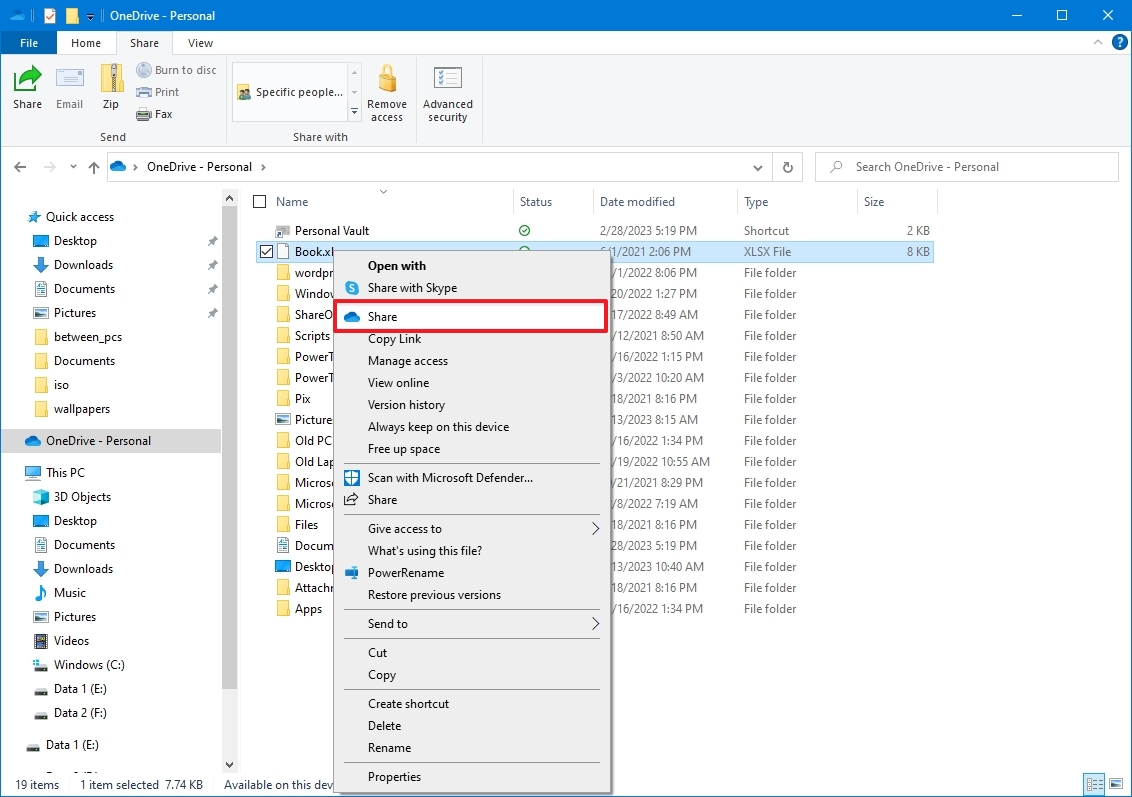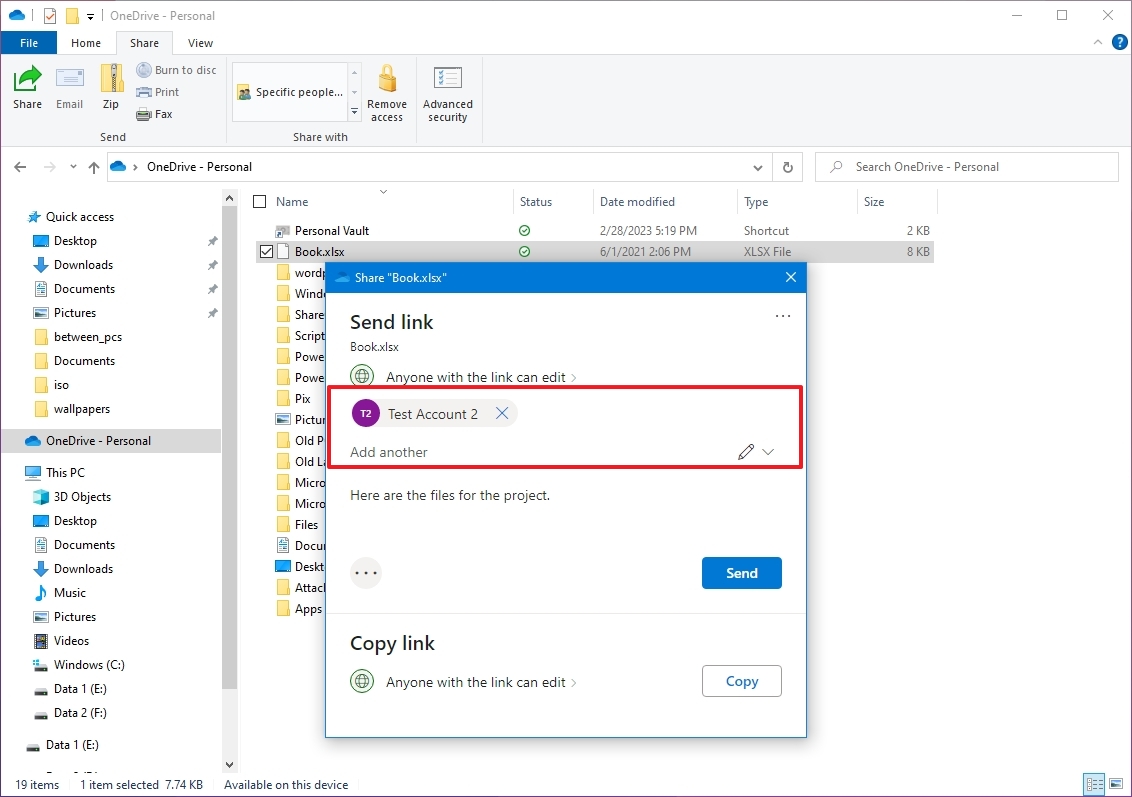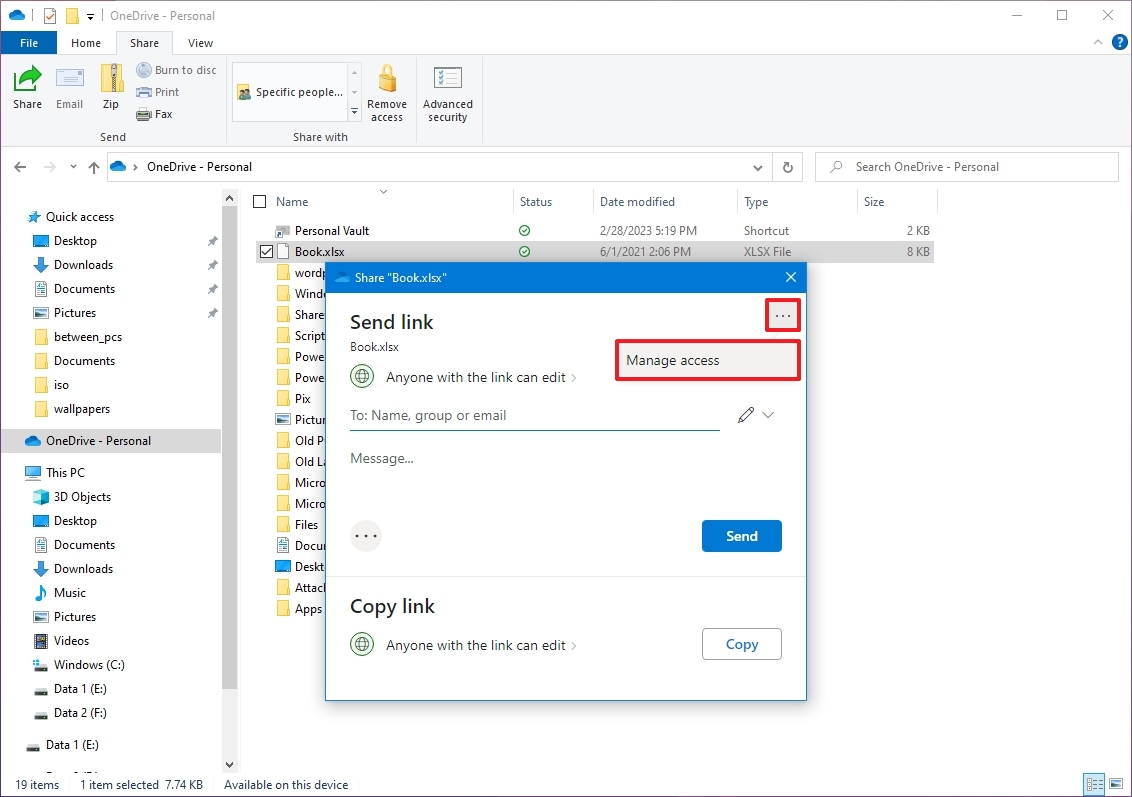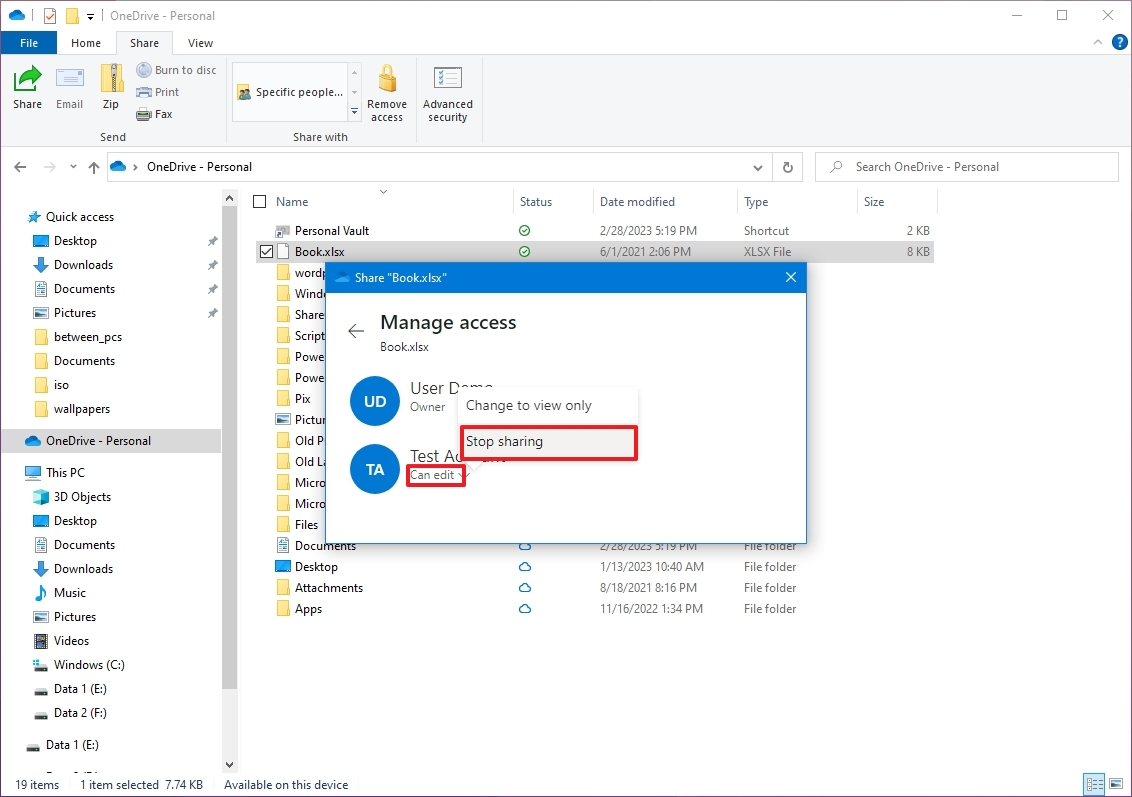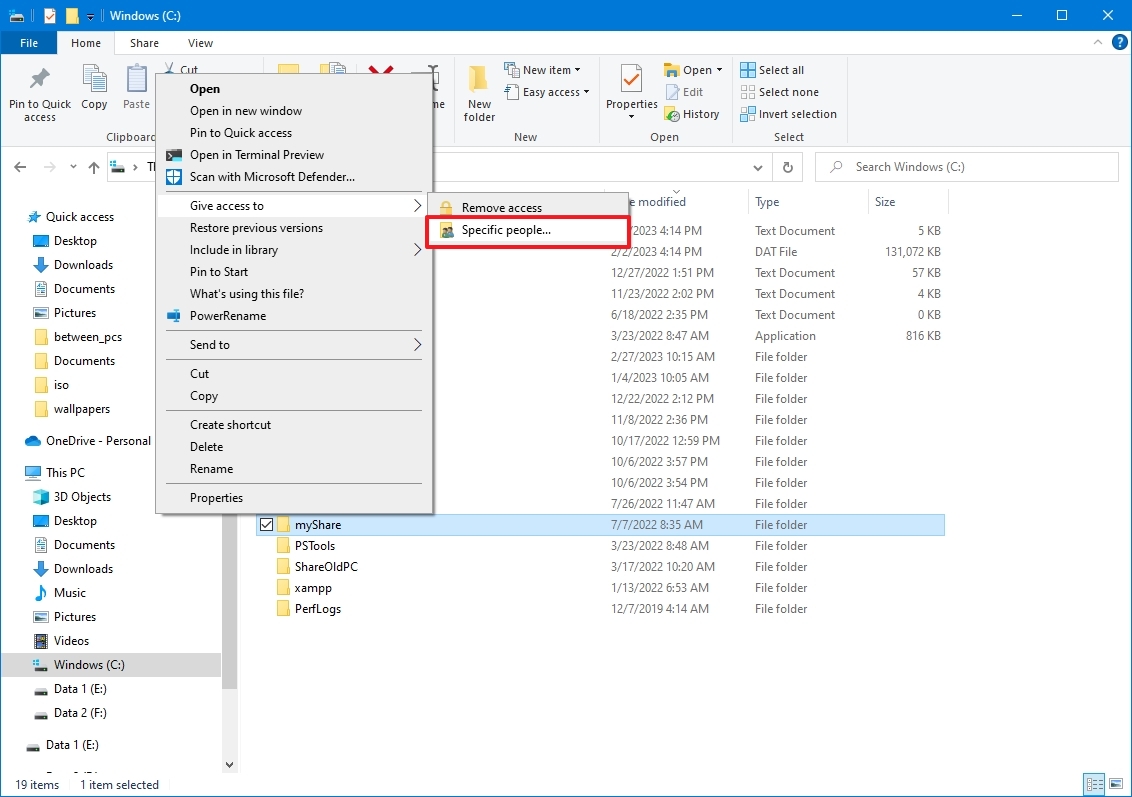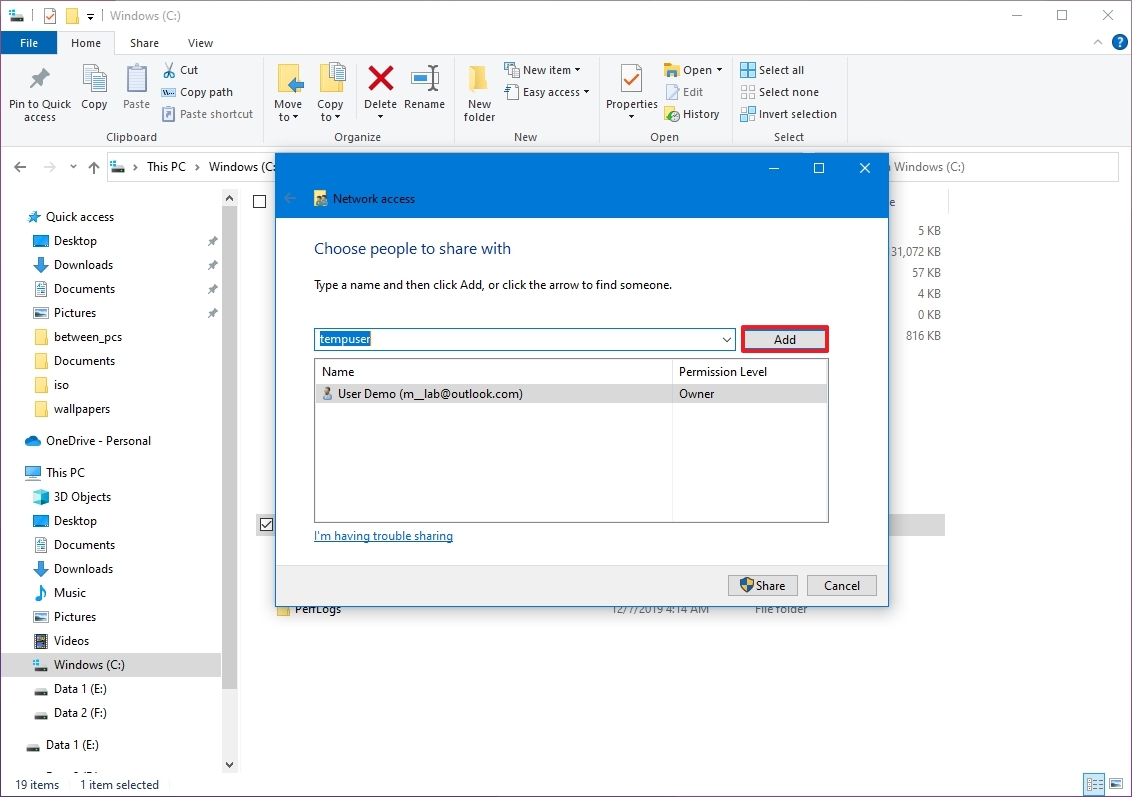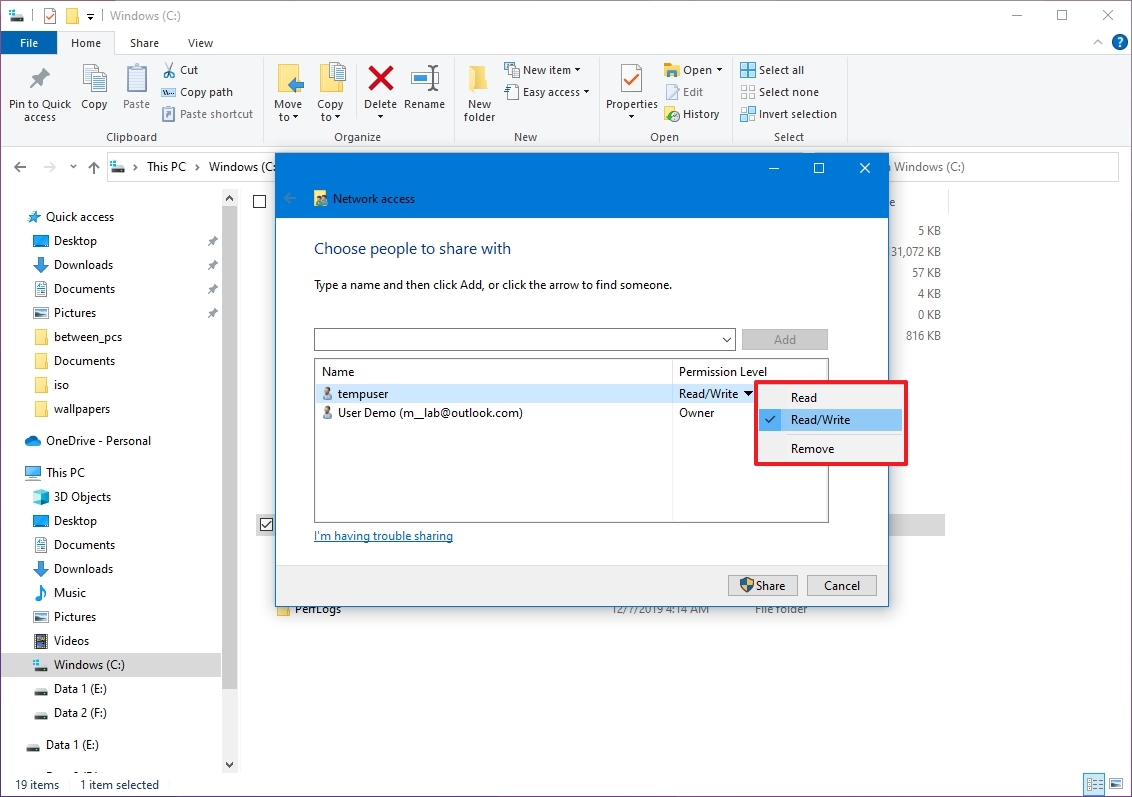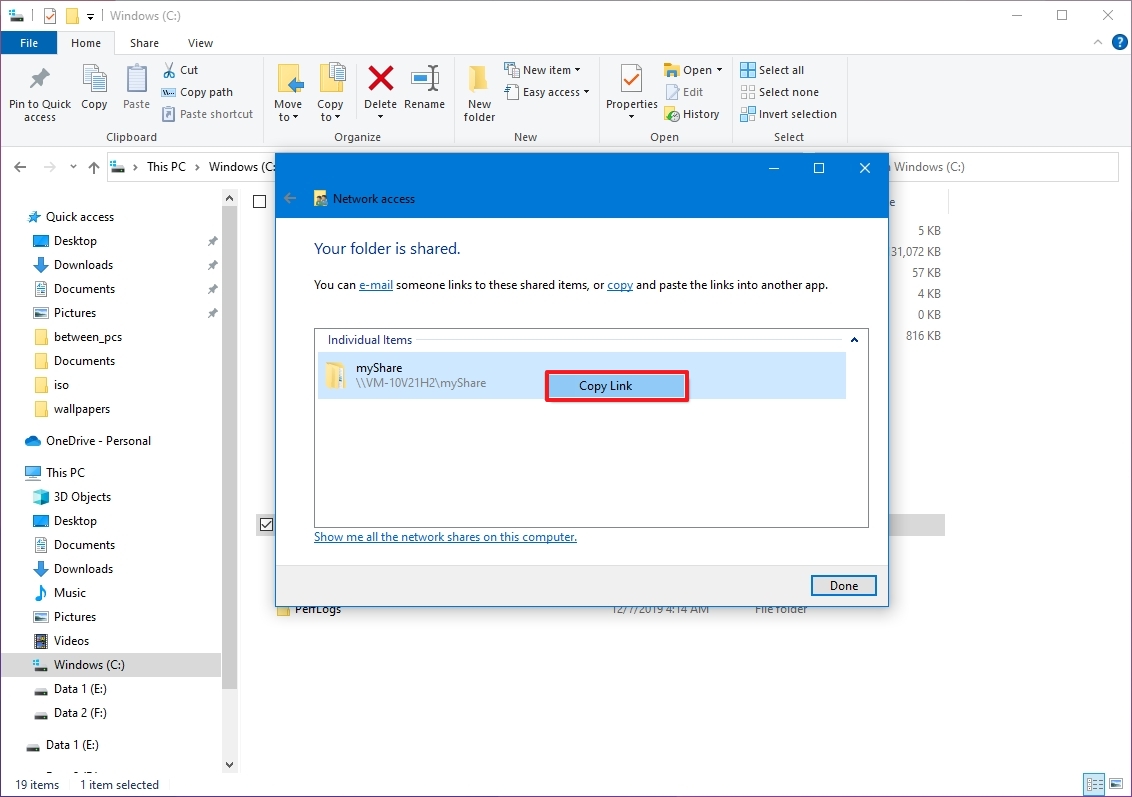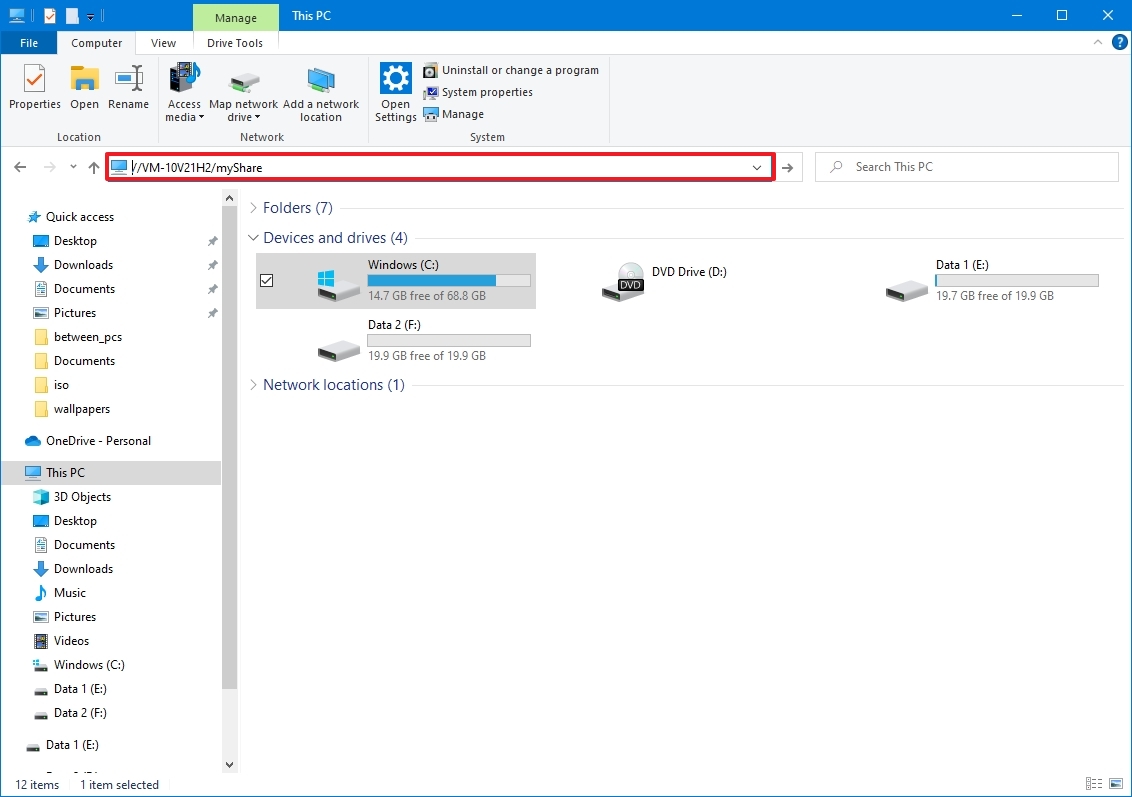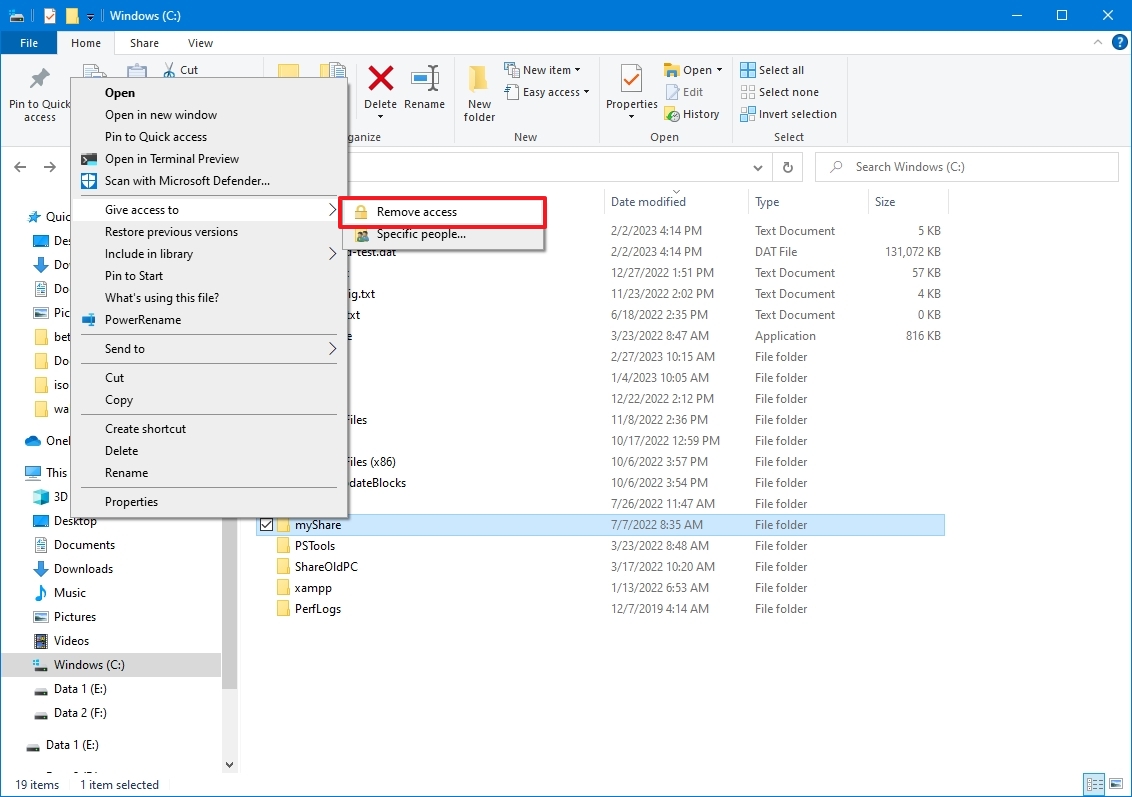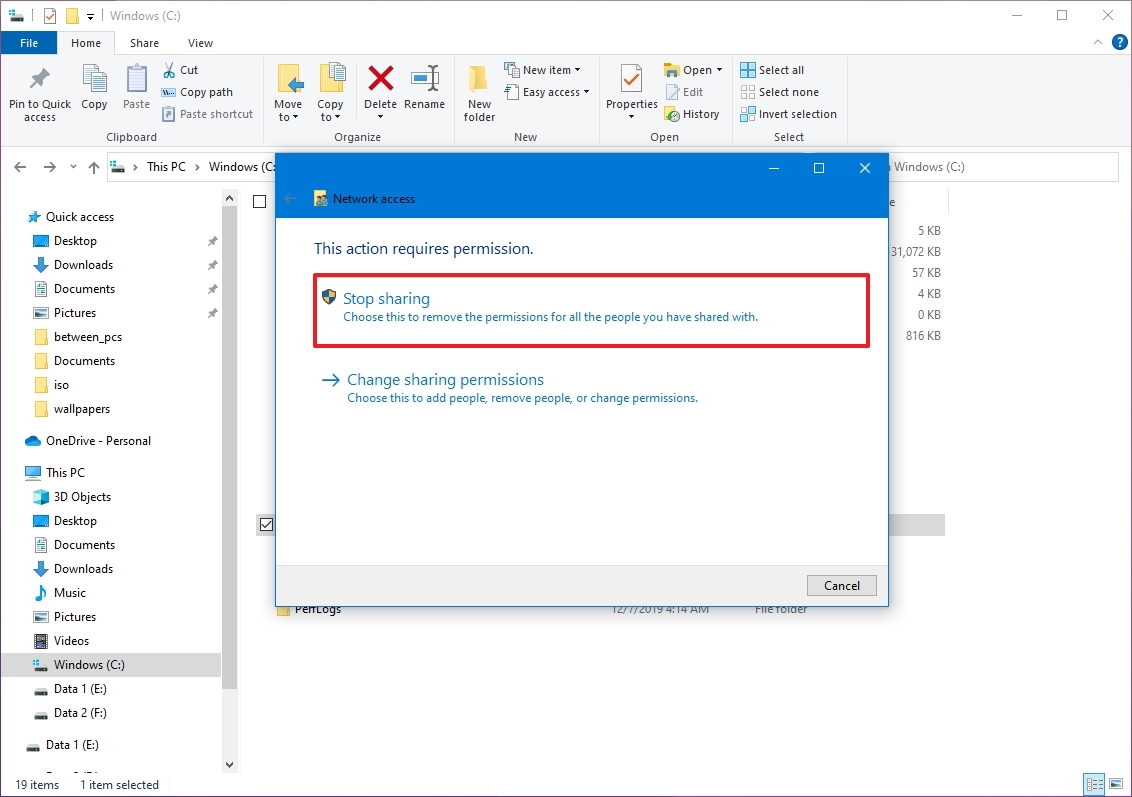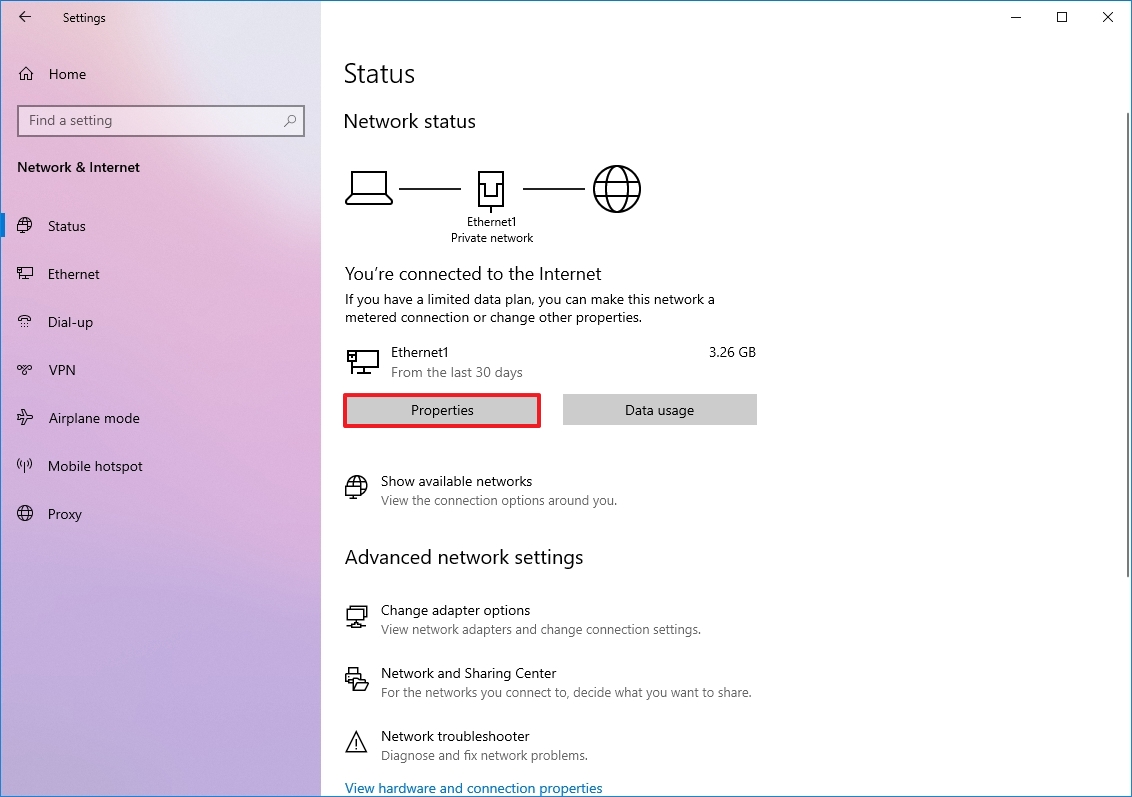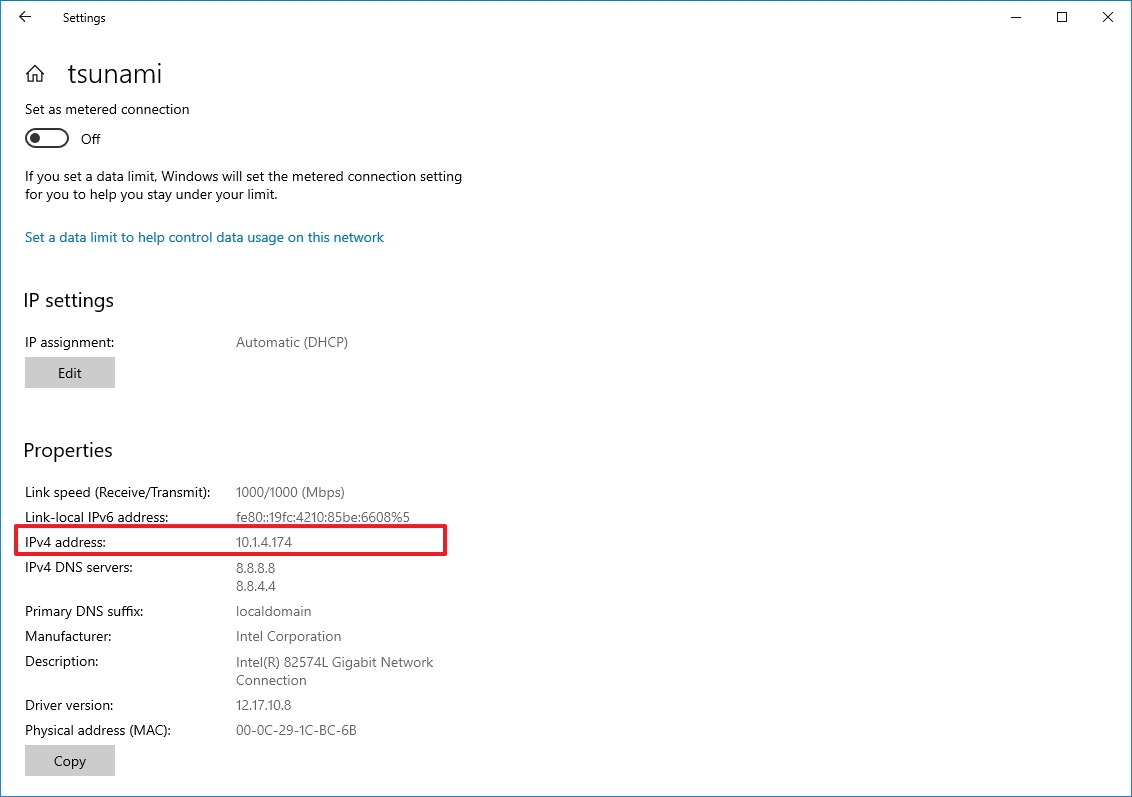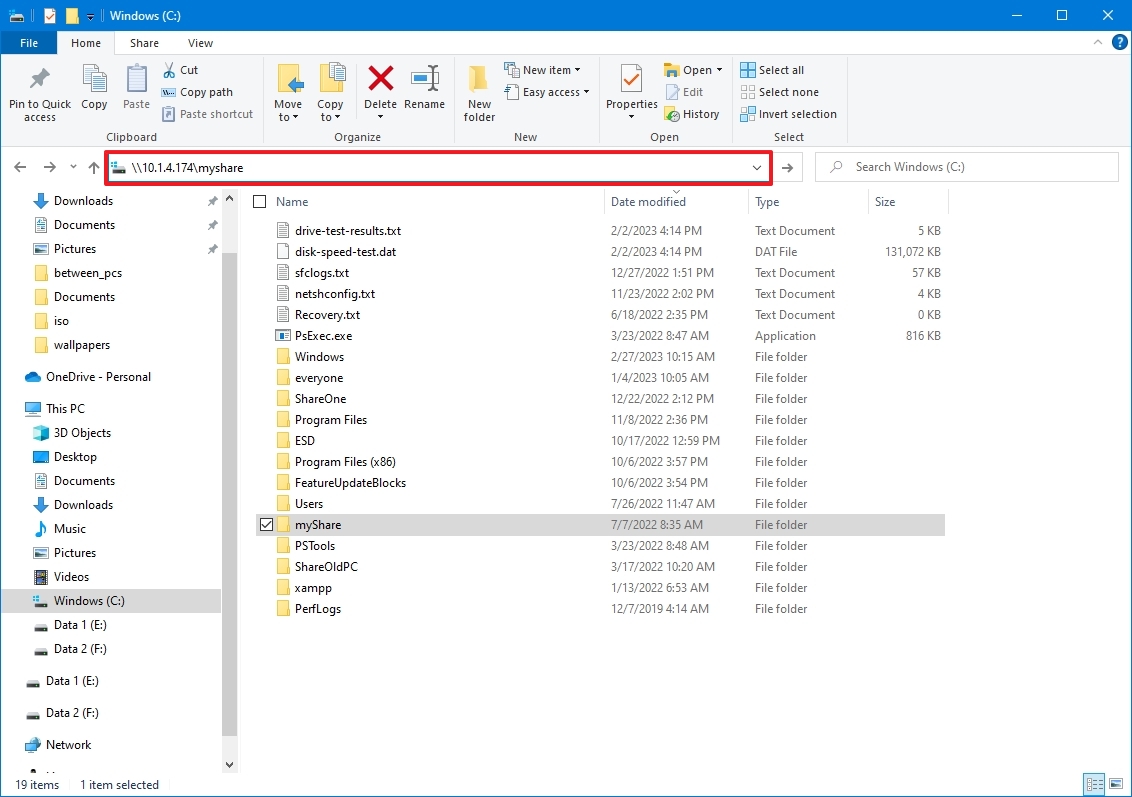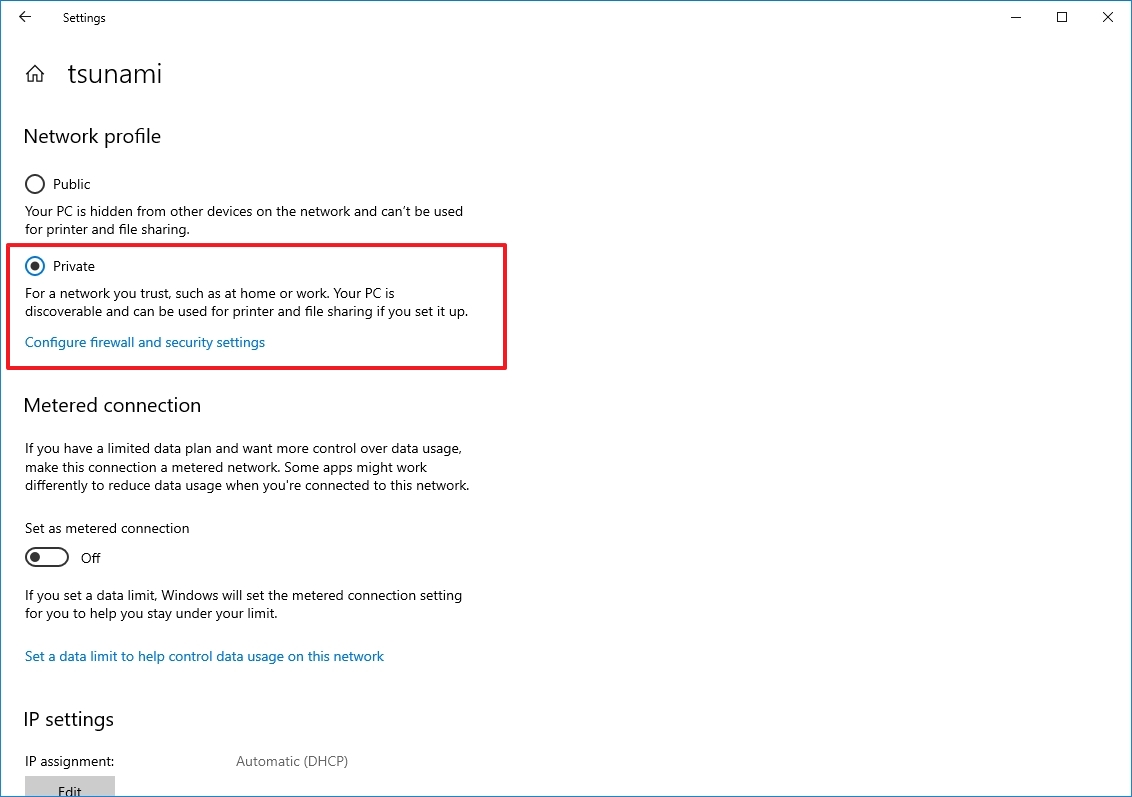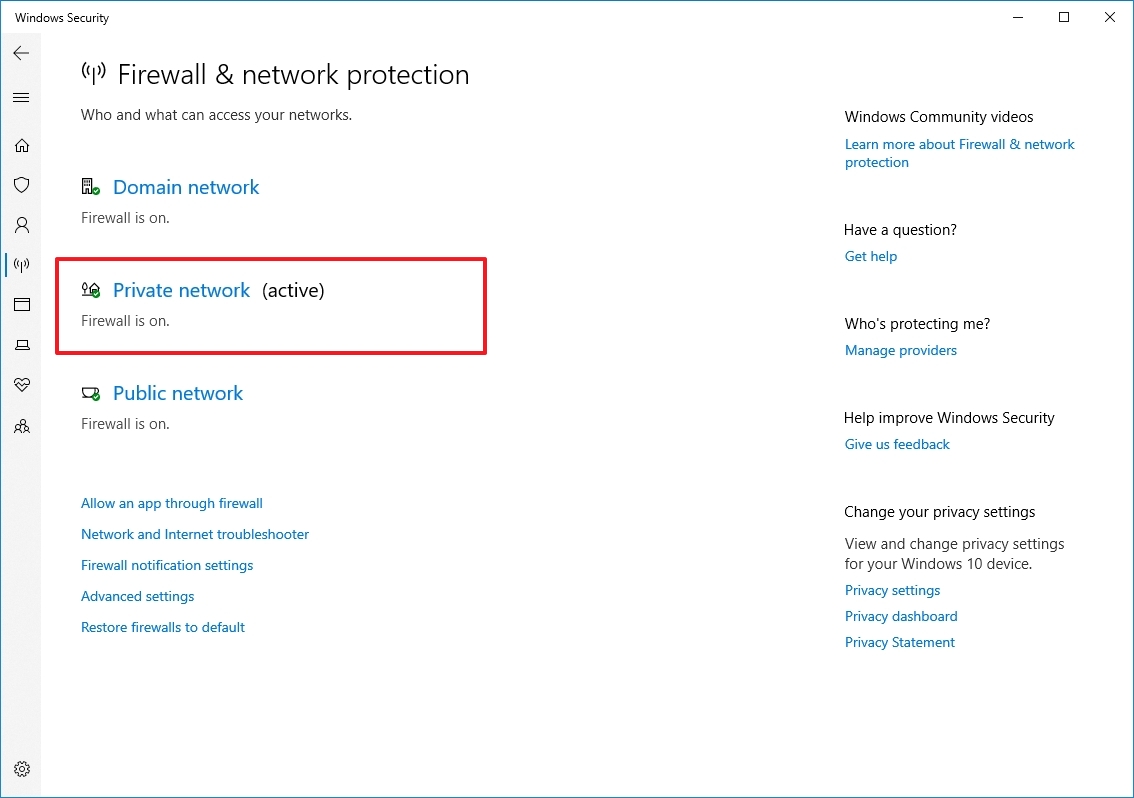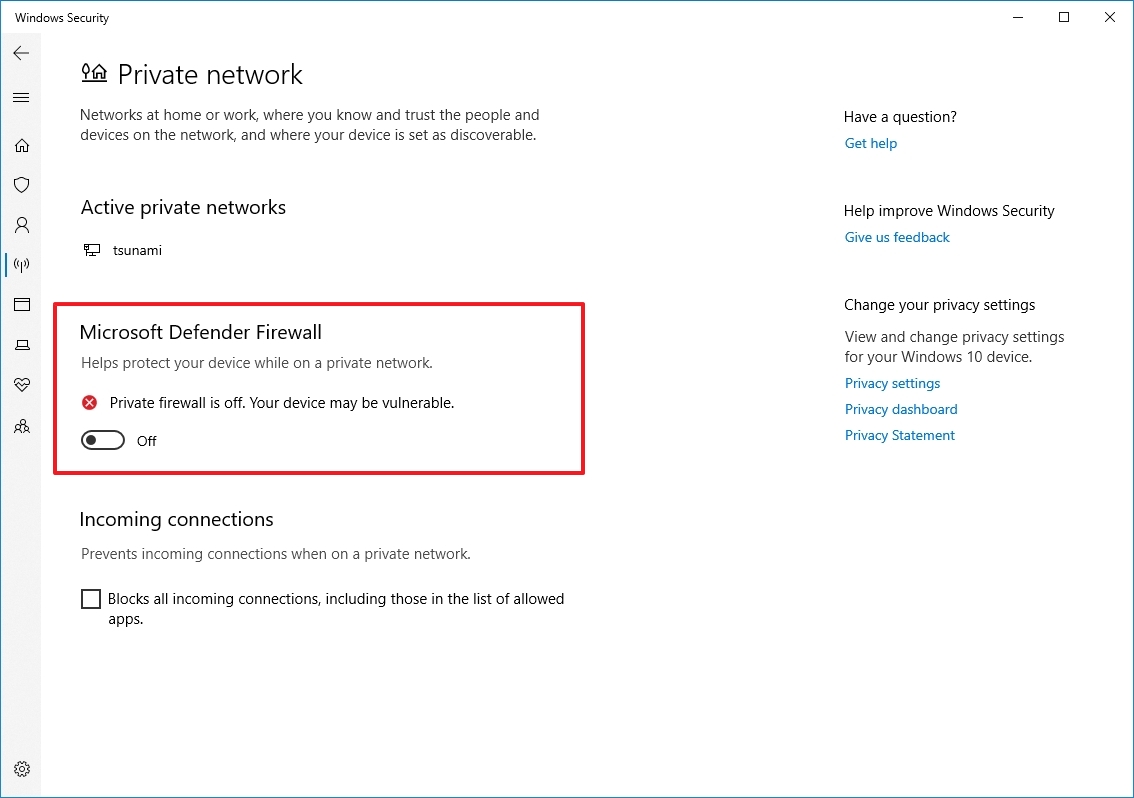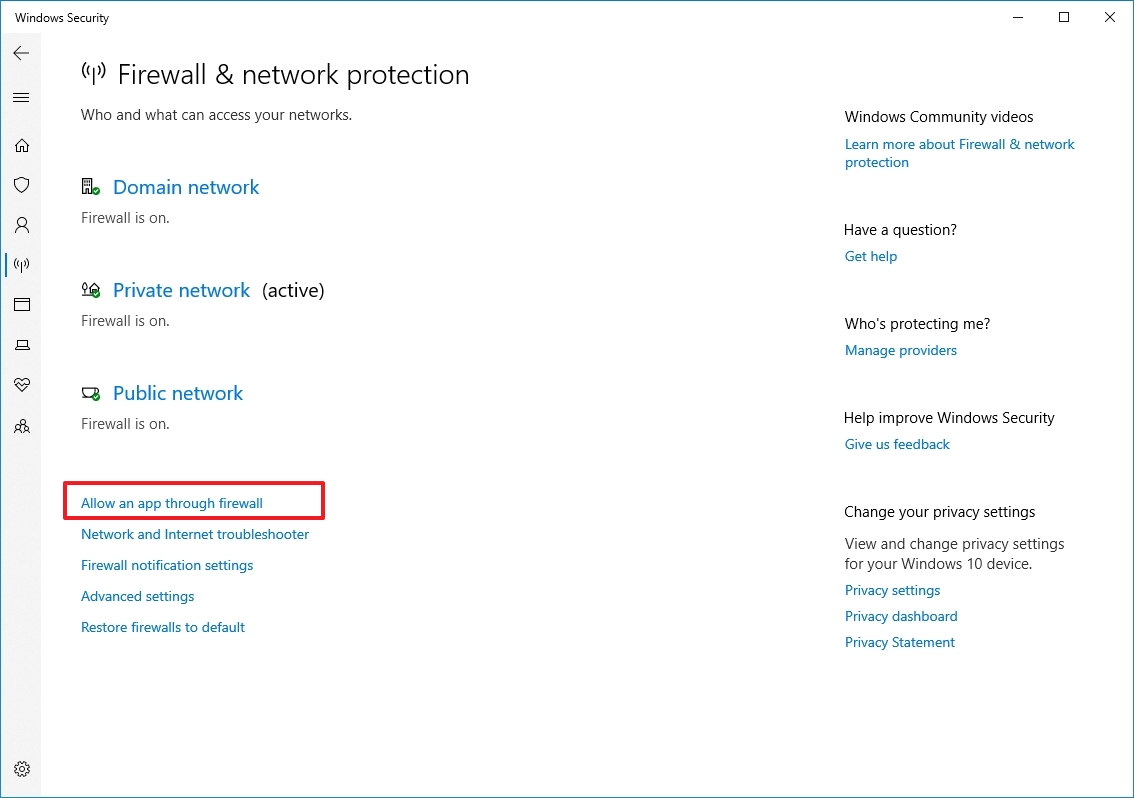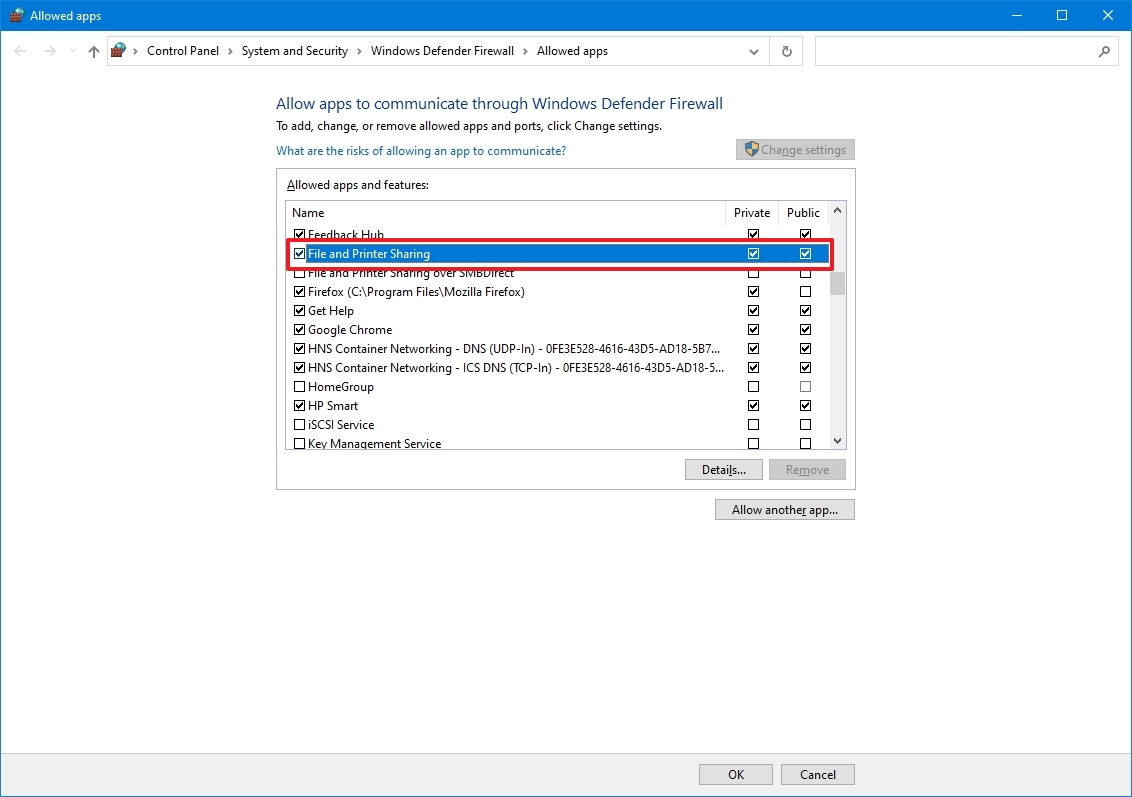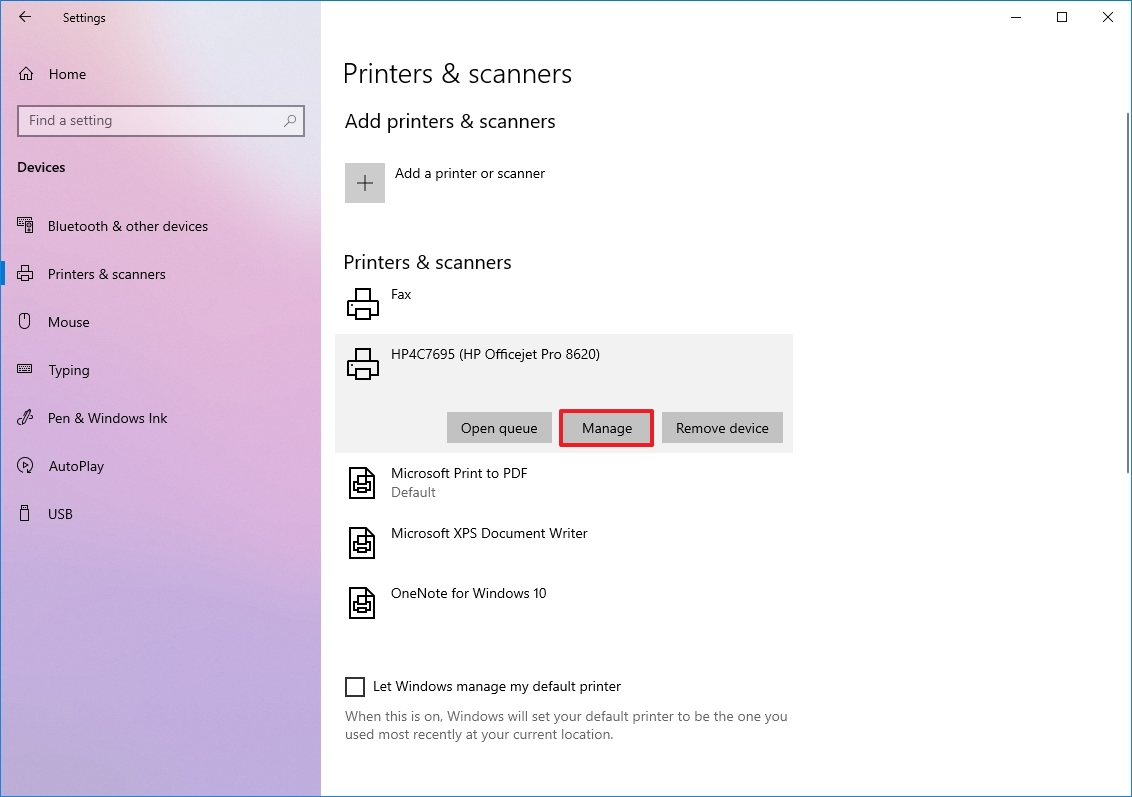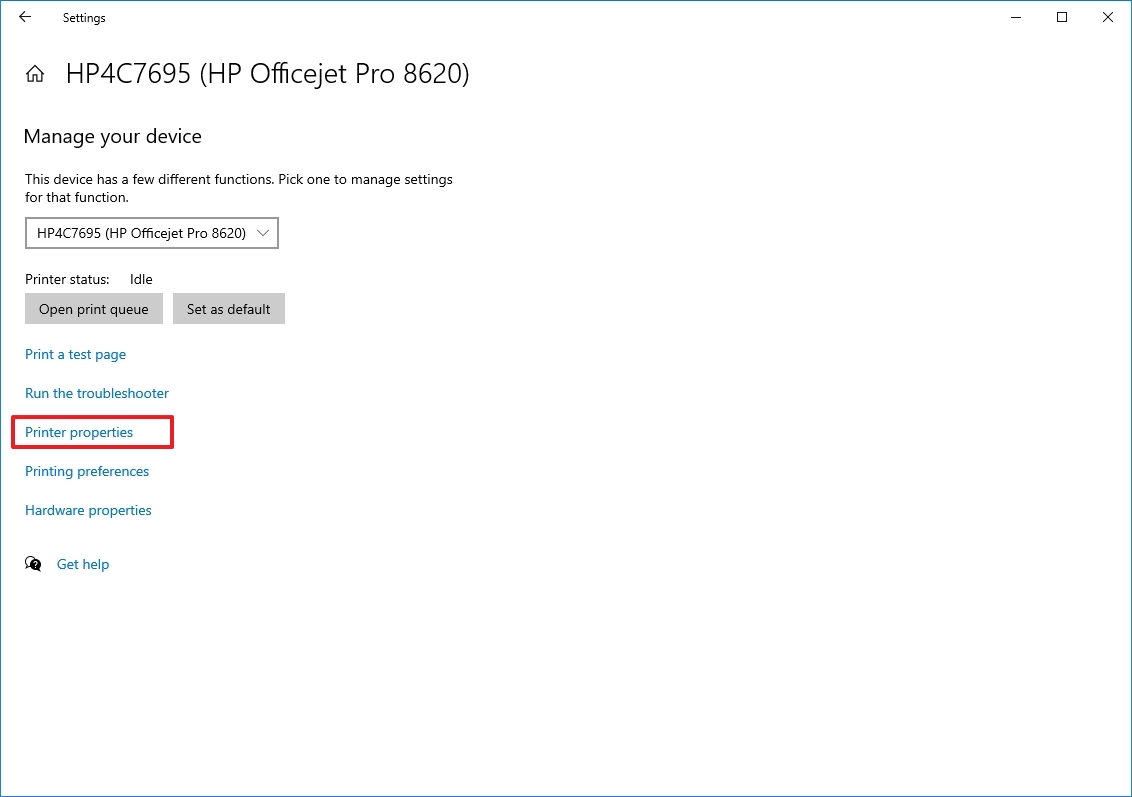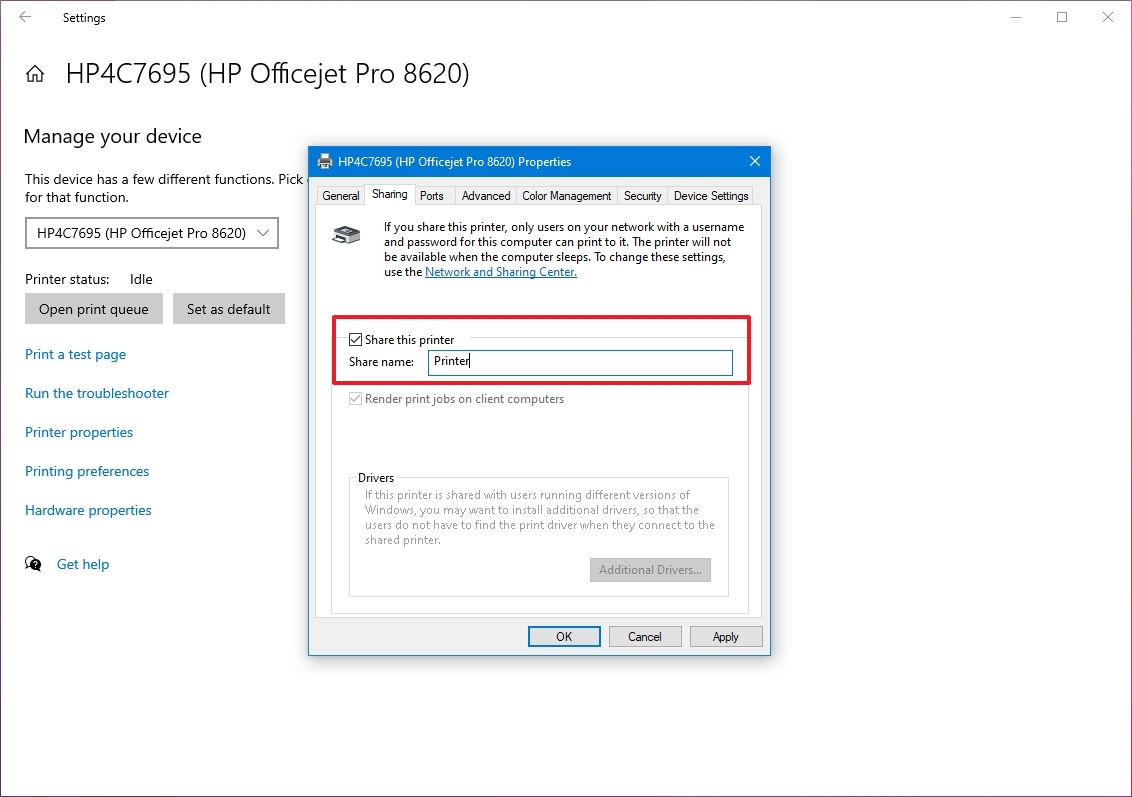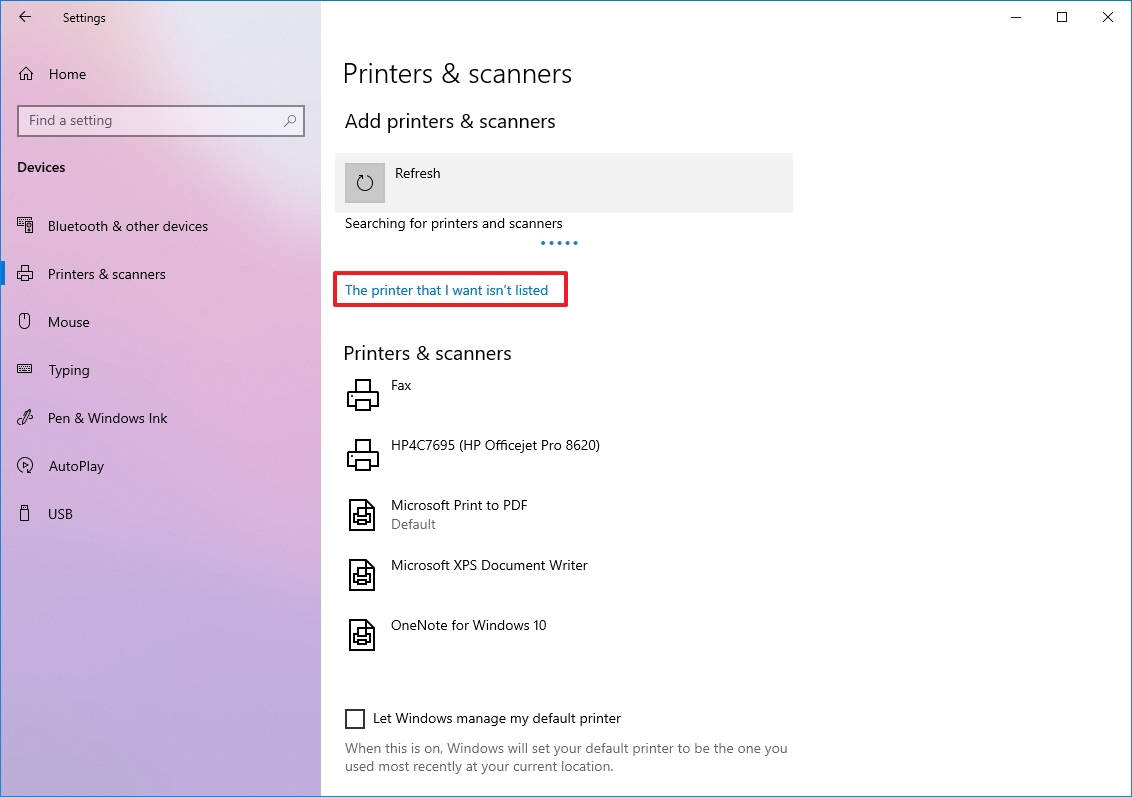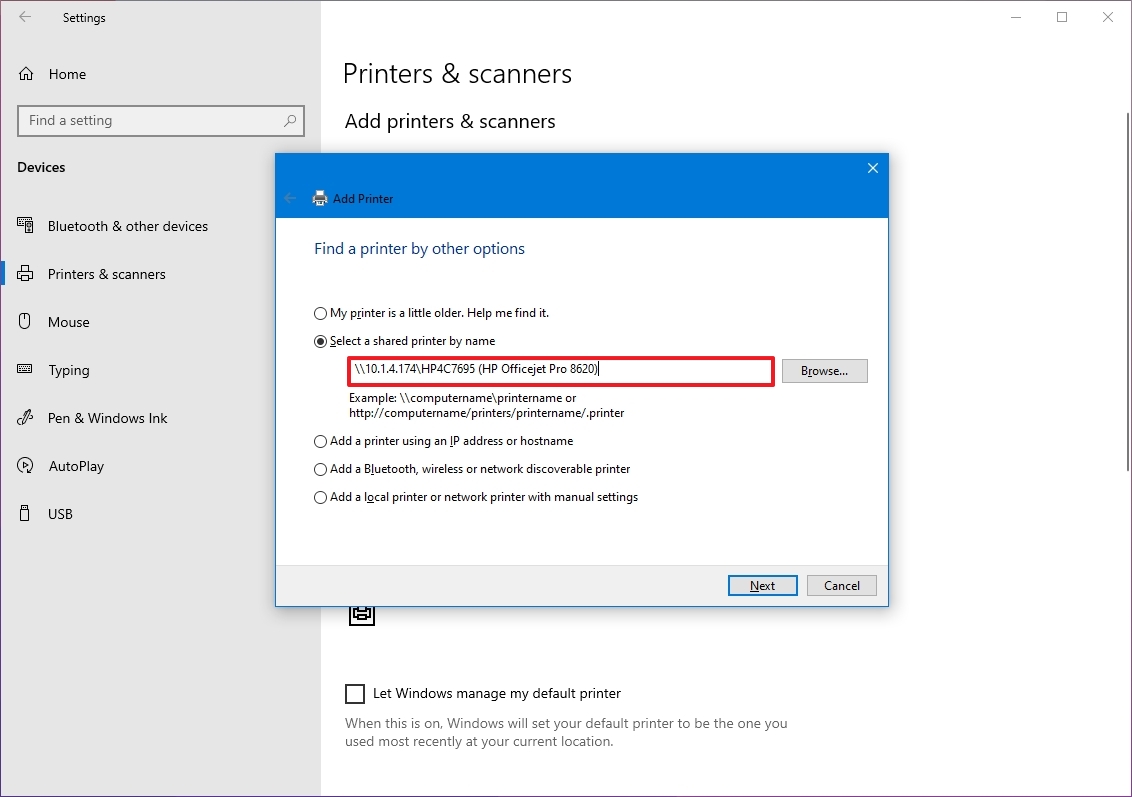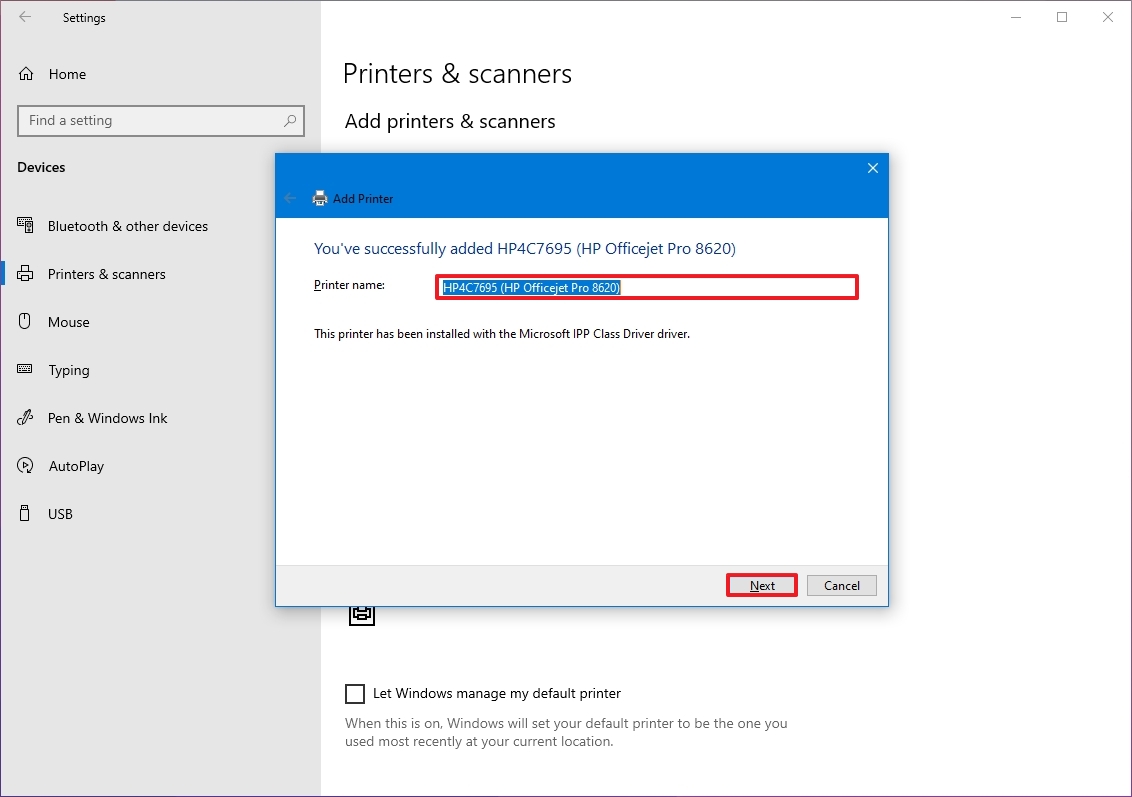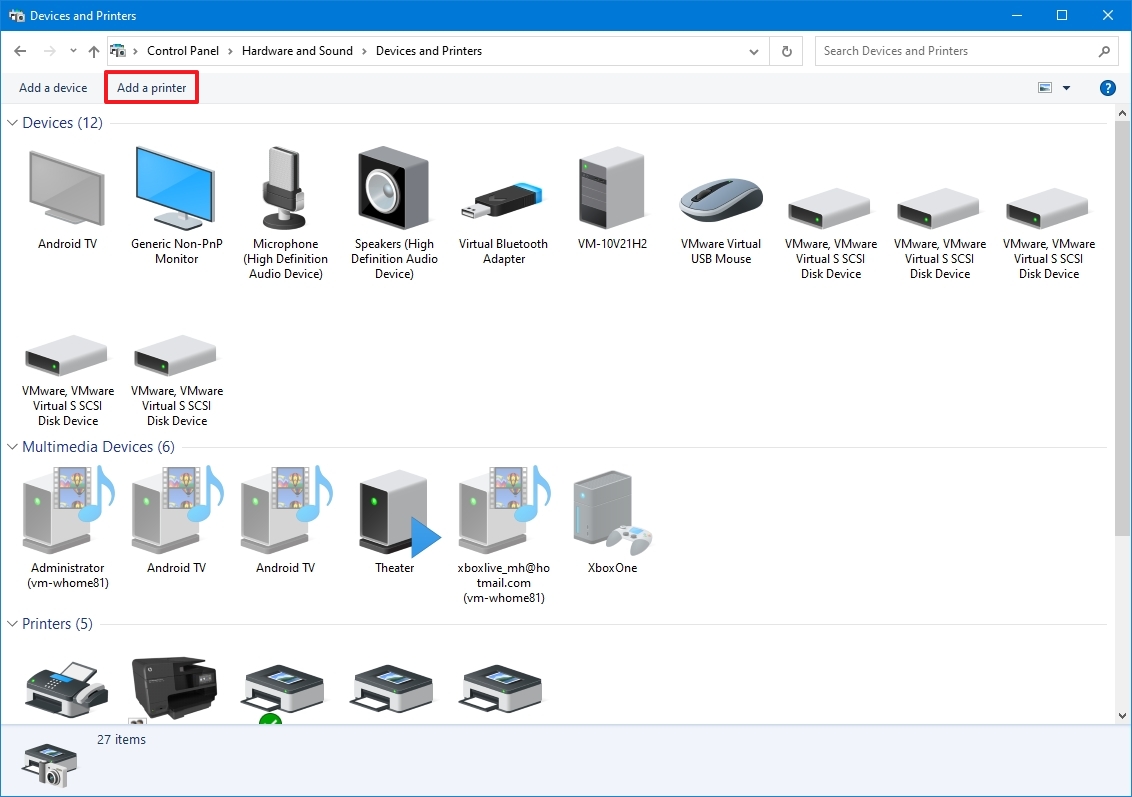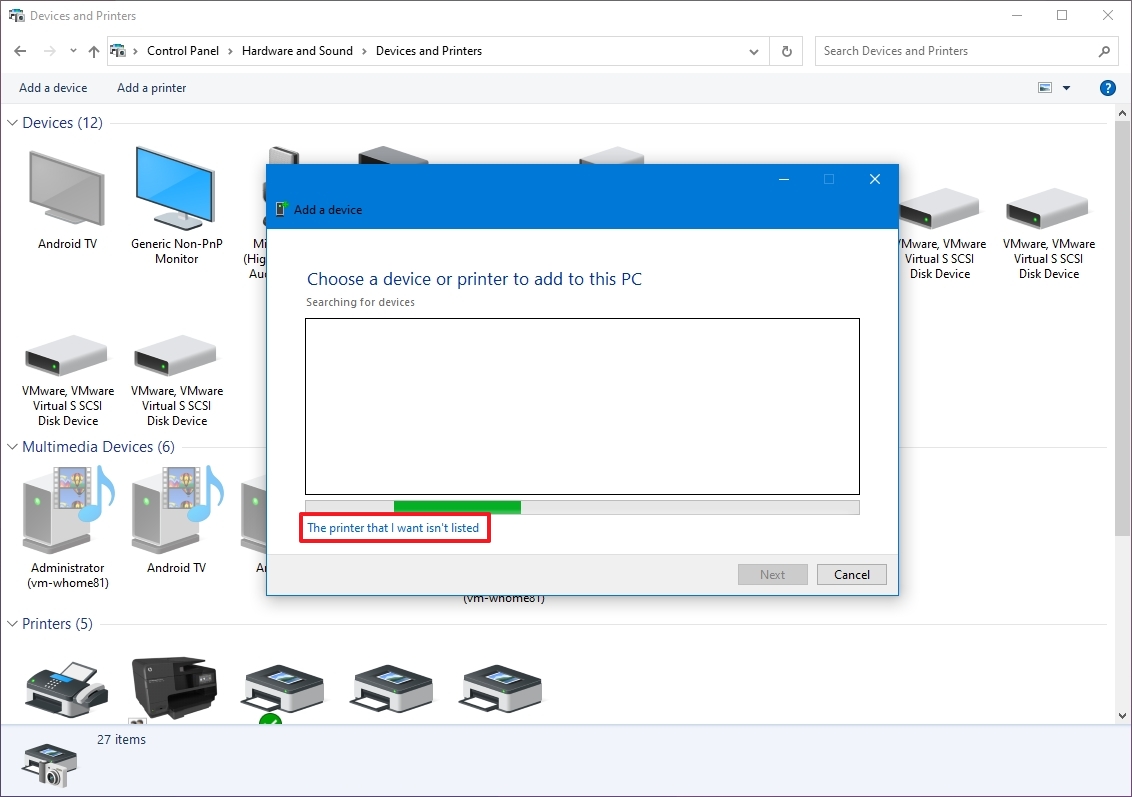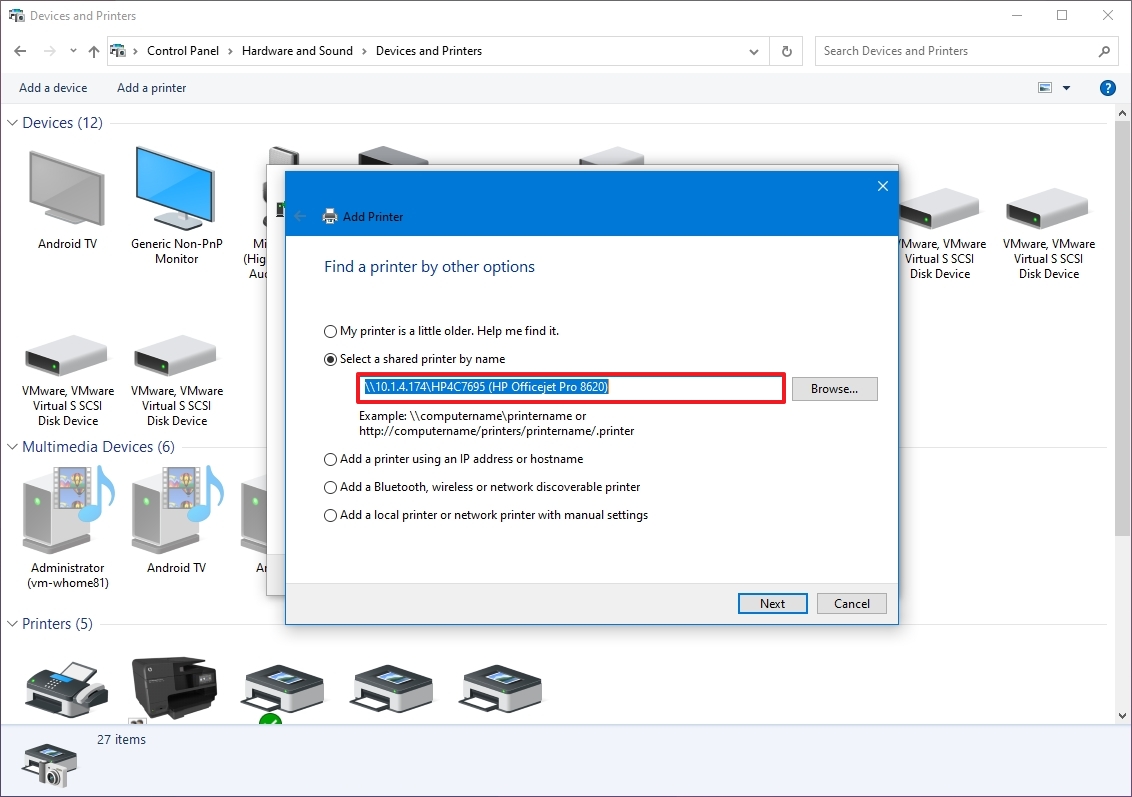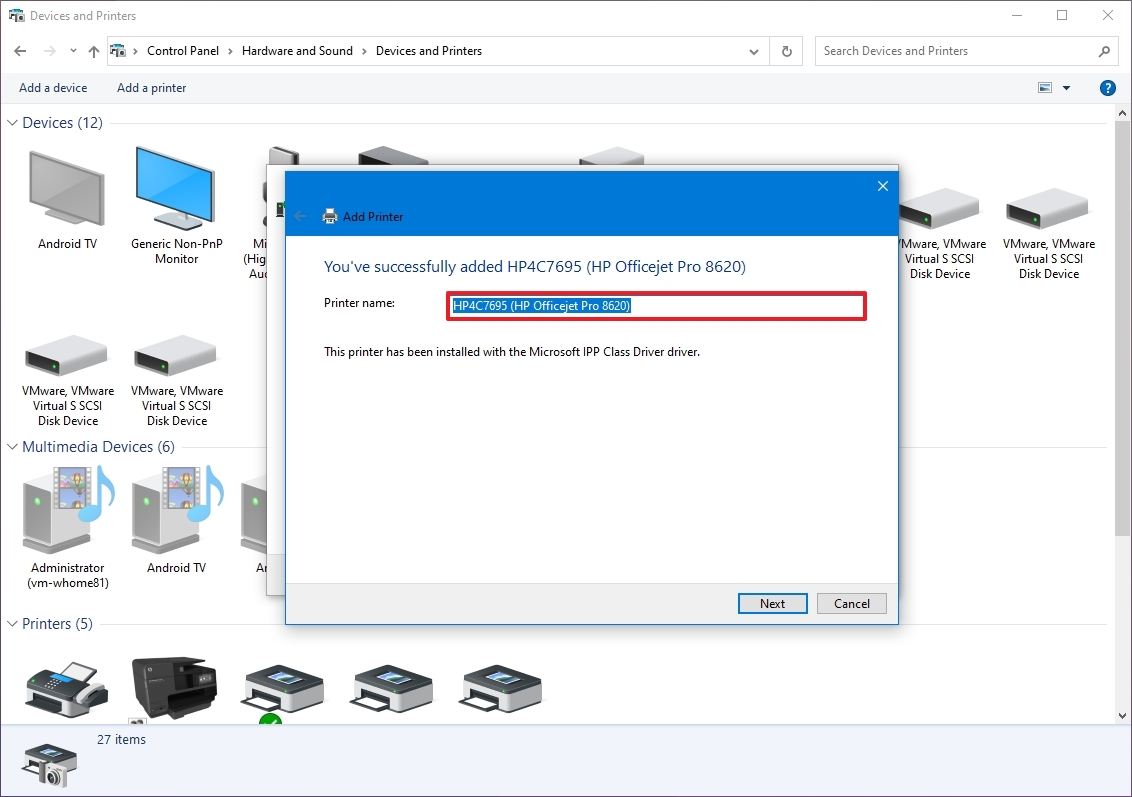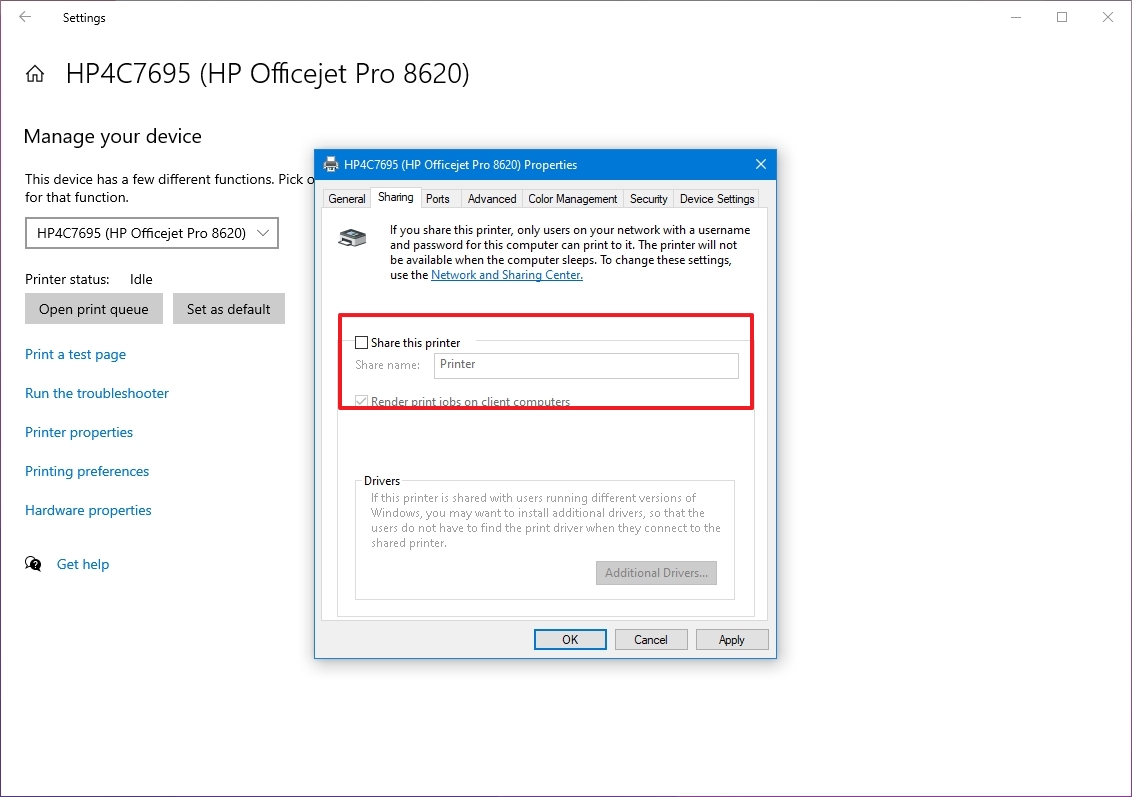How to share files and printers without HomeGroup on Windows 10
Do you have to share files or a printer with other users? Here's how on Windows 10.
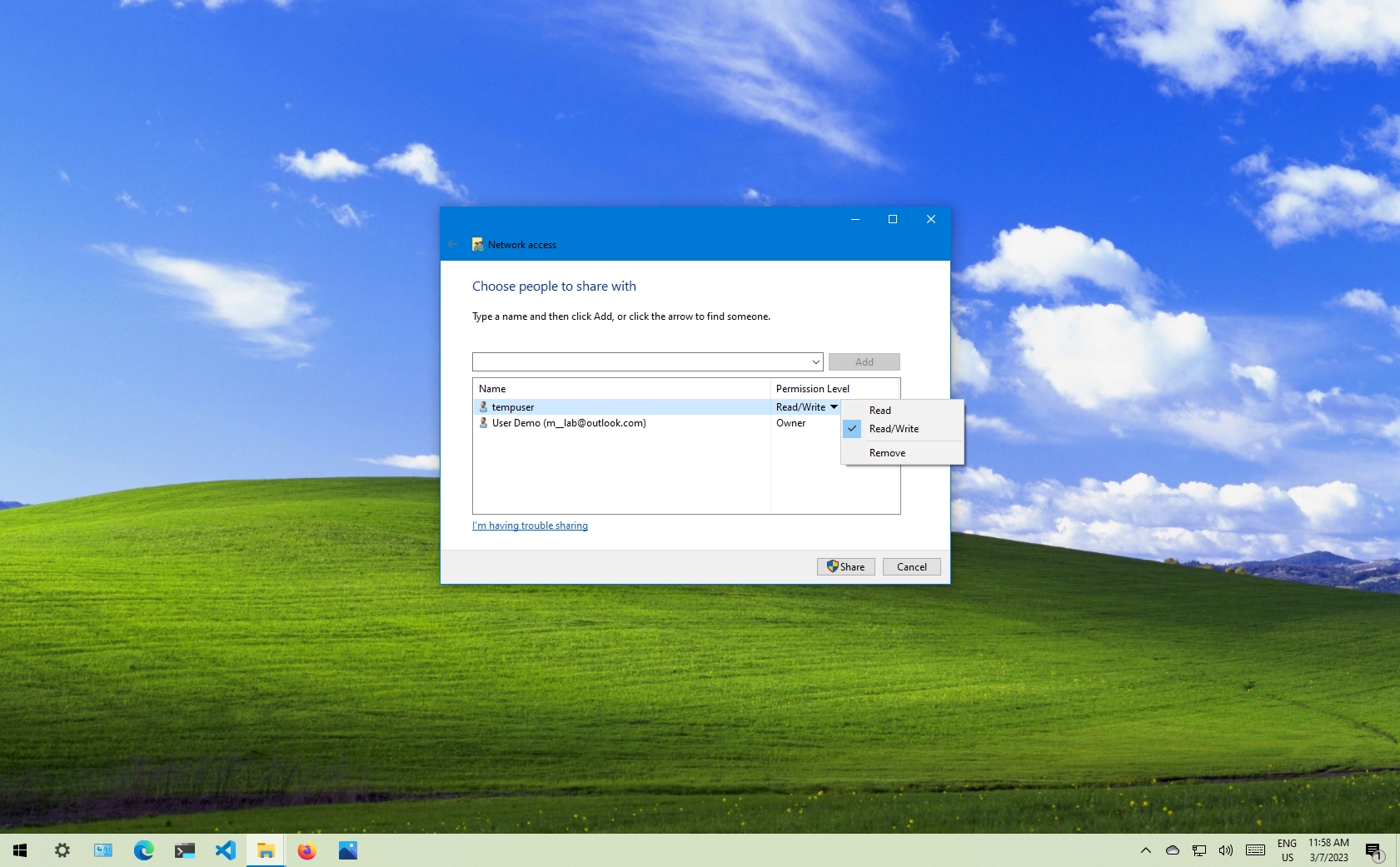
On Windows 10, HomeGroup was a feature to simplify the process of sharing resources across a small network with other users. However, since the feature has been removed, you now have to use different methods to share files, folders, and printers with other users.
Some of these methods include Nearby sharing, OneDrive, and the more advanced sharing options that offer virtually the same experience but use a different set of instructions.
This how-to guide will walk you through the steps to share files and printers inside the local network without HomeGroup on Windows 10.
How to share files on Windows 10
Windows 10 offers several ways to share files and folders with other users, including using the Share feature, OneDrive, and setting up a more advanced configuration File Explorer.
Send files with Share
If you have to share one or more files with another user in the local network or across the world only one time, you can use the "Share" feature, which comes built into File Explorer and most modern apps.
To share files using the Share feature on Windows 10, use these steps:
All the latest news, reviews, and guides for Windows and Xbox diehards.
- Open File Explorer.
- Browse to the folder location with the files.
- Select the files.
- Click on the Share tab.
- Quick tip: Alternatively, you can right-click the selection and choose the "Share" option in the context menu. Also, the "Share" option can be found in many apps that you acquire from the Microsoft Store.
- Click the Share button.
- Select the app, contact, or nearby sharing device.
- Continue with the on-screen directions to share the content.
Although this is a sharing feature, you're technically sending the files to another destination. If you're about to share files with a nearby device, note that "Nearby sharing" needs to be enabled on the source and destination computers to work correctly. You can learn more about nearby sharing, in this guide.
Share files with OneDrive
OneDrive is the application that Microsoft wants you to use to share files or folders with family, friends, or colleagues.
The difference with the Share feature is that OneDrive allows you to share virtually any file by creating a secure link that others can use to access the content. You can revoke access to the files at any time.
To share files with OneDrive on Windows 10, use these steps:
- Open File Explorer.
- Click the OneDrive folder from the left pane.
- Browse to the folder with the files.
- Right-click the file and select the Share option (blue icon).
- (Optional) Click the "Anyone with the link can edit" option.
- Under the "More settings" section, select the "Can view" option to configure the share to read-only.
- Click the Apply button.
- Confirm the email address of the person to share the file. Or click the Copy Link option to copy the link to the clipboard.
- (Optional) Compose a message for the share.
- Click the Send button.
After you complete the steps, the recipient will receive the link to access the shared file, and depending on the settings, the recipient will be able to view or edit the file.
Stop file sharing
To stop sharing a file in OneDrive, use these steps:
- Open File Explorer.
- Click the OneDrive folder from the left pane.
- Browse to the folder with the share.
- Right-click the shared file and select the Share option (blue icon).
- Click the three-dotted button in the top-right corner and select the Manage Access option.
- Click the Can edit button and select the Stop sharing option.
Once you complete the steps, the files will no longer be accessible by other people with the link.
Share files with File Explorer
When you have to share multiple files in the local network, you can use File Explorer's advanced sharing options.
When sharing a folder, usually, you want to share the folder by creating a folder in the root of the "C" drive or secondary drive or partition. Always avoid sharing files from the system folders, including Desktop, Documents, Pictures, etc.
To share a folder in the local network on Windows 10, use these steps:
- Open File Explorer.
- Browse to the folder with the content that you want to share.
- Right-click the folder, select the "Give access to" option, and click the Specific people option.
- Use the drop-down menu, and select the user or group to share the folder and its contents. Options available include:
- Local users — When you choose individual accounts, the user must provide username and password to access the files. If the user is signed in using the same credentials on their computer, then they may be able to access the data without any prompts.
- Everyone — Shares the contents with anyone in the network without entering a password to access the files.
- Quick note: You may also find an option to create a new account, but it won't be useful since Windows 10 no longer allows the creation of new accounts using Control Panel.
- Click the Add button.
- Under the "Permission Level" column, select the permissions that the user will have to access the contents:
- Read — Gives network users the ability to list and open files, but they won't be able to modify or delete existing files and folders. Also, they won't be able to upload or create new folders or files.
- Read/Write — Allows users to list, open, modify, delete, upload, and create new files and folders.
- Remove — Blocks the specified user or group from accessing the folder.
- Click the Share button.
- Right-click the shared folder path and select the Copy Link option.
- Click the Close button.
After you complete the steps, you can share the link (which you copied to the clipboard on step 8) with users in the local network.
Connect to shared files over the network
To access a shared folder on Windows 10, use these steps:
- Open File Explorer.
- Right-click and paste the network path for the shared folder in the address bar and press Enter.
- Confirm your account credentials (if applicable).
- Upload, download, or modify files as necessary.
If you're logged on using a username and password that matches the credentials on the device sharing the folder, you may not need to sign in again to access the shared folder. However, if you're prompted to log in, you must enter the account credentials of an account that has permission to the files located on the computer sharing the folder to access the content.
Alternatively, users can use the "Network" page from the File Explorer from the left pane to browse the computer and access the shared folder contents.
When sharing folders in the network, users will only be able to access the files if the computer sharing the folder is powered on and connected to the network.
Stop sharing files over the network
If you no longer wish to share files in the network, use these steps:
- Open File Explorer.
- Browse to the folder with the content that you want to share.
- Right-click the folder, select the "Give access to" option and click the Remove access option.
- Click the Stop sharing button.
Once you complete the steps, the content will no longer be accessible through the network.
Troubleshoot access to shared files
When sharing a folder or printer, there's a chance you won't be able to access the resources because of a problem translating the computer name to a TCP/IP address, issues with the firewall, or network profile settings.
Use IP address instead of computer name
To determine the device network address to replace the computer name in the path to access the shared resources, use these steps:
- Open Settings.
- Click on Network & Internet.
- Click on Status.
- Click the Properties buttons for the current "Ethernet" or" Wi-Fi" connection.
- Under the "Properties" section, confirm the current IPv4 address of the device.
- In the network path to the shared folder, replace the computer name with the IP address . For example, after editing the link, the unique path should look like this: //10.1.2.173/share instead of //homepc/share.
After you complete the steps, you should now be able to access the network content.
Change network profile to private
If the computer uses the public network profile, the folder or printer won't be discoverable in the network. As a result, trying to access the resources will require entering credentials. To avoid this issue, you must set the network profile to private on every computer.
To set the network profile to private, use these steps:
- Open Settings.
- Click on Network & Internet.
- Click on Status.
- Click the Properties buttons for the current "Ethernet" or "Wi-Fi" connection.
- Under the "Network profile" section, select the Private option.
Once you complete the steps, users should be able to access shared files and printers from any computer in the local network.
Configure access through firewall
You can temporarily disable the firewall on both devices to determine if that is the cause of the problem. If the firewall blocks access to the shared folder, you'll need to open the corresponding ports.
Disable Microsoft Defender Firewall
To temporarily disable the firewall on Windows 10, use these steps:
- Open Windows Security.
- Click on Firewall & network protection.
- Click the Private network option.
- Turn off the "Microsoft Defender Firewall" toggle switch.
- Quick tip: after finding out the issue, make sure to turn the firewall back on.
After you complete the steps, repeat the steps on the device, and then try to access the shared folder. If it's a firewall problem, then you'll need to open the corresponding network port. Also, after resolving the issue, remember to re-enable the firewall using the same instructions outlined above, but in step 4, make sure to turn on the "Microsoft Defender Firewall" toggle switch.
Open Microsoft Defender Firewall ports
To allow file and printer sharing through the firewall, use these steps:
- Open Windows Security.
- Click on Firewall & network protection.
- Click the "Allow app through firewall" option.
- Click the Change settings button.
- Select the "File and Printer Sharing" option, and make sure to check the Private network option.
- Click the OK button.
Once you complete the steps, network users can access the shared folder even with the firewall turned on.
If you have a third-party firewall solution, you'll need to check your vendor support website for specific details on how to get around this problem.
How to share printers on Windows 10
In previous versions, the easiest method to share a printer was using HomeGroup, but now even without the feature, you can still share a USB printer with other users in the local network.
If you have a printer with a built-in print server, it's recommended to use that feature. You can refer to the printer manufacturer support website for instructions on connecting the device to the network. If you're dealing with a print server, you only need to follow the steps below to share the printer and connect the computers.
Share printer on Windows 10
To share a printer on Windows 10 (assuming it's already installed), use these steps:
- Open Settings.
- Click on Devices.
- Click on Printers & scanners.
- Under the "Printer & scanners" section, select the printer to share in the network.
- Click the Manage button.
- Click the Printer properties option.
- Click the Sharing tab.
- Check the "Share this printer" option.
- In the "Share name" field, specify a new short and descriptive name.
- Click the Apply button.
- Click the OK button.
After you complete the steps, the printer will be available to network users, but only if the computer is powered on.
Connect computer to shared printer
To connect computers to the shared printer, use these steps:
- Open Settings.
- Click on Devices.
- Click on Printer & scanners.
- Click the "Add a printer or scanner" button.
- Select the printer from the list.
- (Optional) If the discovery feature doesn't work, click the "The printer that I want isn't listed" option.
- Choose the "Select a shared printer by name" option.
- Type the path of the printer location: \\xxx.xxx.xxx.xxx\PRINTER-SHARE-NAME
In the command, make sure to change the "xxx.xxx.xxx.xxx" and "PRINTER-SHARE-NAME" for the IP address (or computer name) and name of the printer.
- Quick tip: You can also click the Browse button to select the shared printer.
- Click the Next button.
- Click the Install driver button (if applicable).
- (Optional) Specify an name of the printer connection. For example, Network Printer.
- Click the Next button.
- Click the Finish button.
Once you complete the steps, you should be able to successfully send a print job to the network printer.
Connect old devices to shared printer
If you have an older version of Windows 10, Windows 8.1, or Windows 7, the steps to connect to the printer will be slightly different.
To connect an old computer to a network-shared printer, use these steps:
- Open Control Panel.
- Click on Hardware and Sound.
- Click on the "Devices and Printers" option.
- Click the "Add a printer" button.
- Select the printer from the list.
- If the discovery feature doesn't work, click the "The printer that I want isn't listed" option.
- Choose the "Select a shared printer by name" option.
- Type the path of the printer location: \\xxx.xxx.xxx.xxx\PRINTER-SHARE-NAME
In the command, make sure to change the "xxx.xxx.xxx.xxx" and "PRINTER-SHARE-NAME" for the IP address (or computer name) and share the name of the printer that you're trying to connect.
- Quick tip: You can click the Browse button to locate and select the shared printer.
- Click the Next button.
- Click the Install driver button (if applicable).
- (Optional) Specify an name of the printer connection. For example, Network Printer.
- Click the Next button.
- Click the Finish button.
After you complete the steps, remember that users can only print as long as the computer sharing the printer is powered on and connected to the network. If the computer is sleeping, hibernating, or powered off, no one will be able to print.
Stop sharing printer on Windows 10
If there's no need to share a printer over the network anymore, then use these steps:
- Open Settings.
- Click on Devices.
- Click on Printers & scanners.
- Under the "Printer & scanners" section, select the printer to share in the network.
- Click the Manage button.
- Click the Printer properties option.
- Click the Sharing tab.
- Clear the "Share this printer" option.
- Click the Apply button.
- Click the OK button.
Once you complete the steps, the printer will no longer be available for network users.
More resources
For more helpful articles, coverage, and answers to common questions about Windows 10 and Windows 11, visit the following resources:
- Windows 11 on Windows Central — All you need to know
- Windows 10 on Windows Central — All you need to know

Mauro Huculak has been a Windows How-To Expert contributor for WindowsCentral.com for nearly a decade and has over 22 years of combined experience in IT and technical writing. He holds various professional certifications from Microsoft, Cisco, VMware, and CompTIA and has been recognized as a Microsoft MVP for many years.
